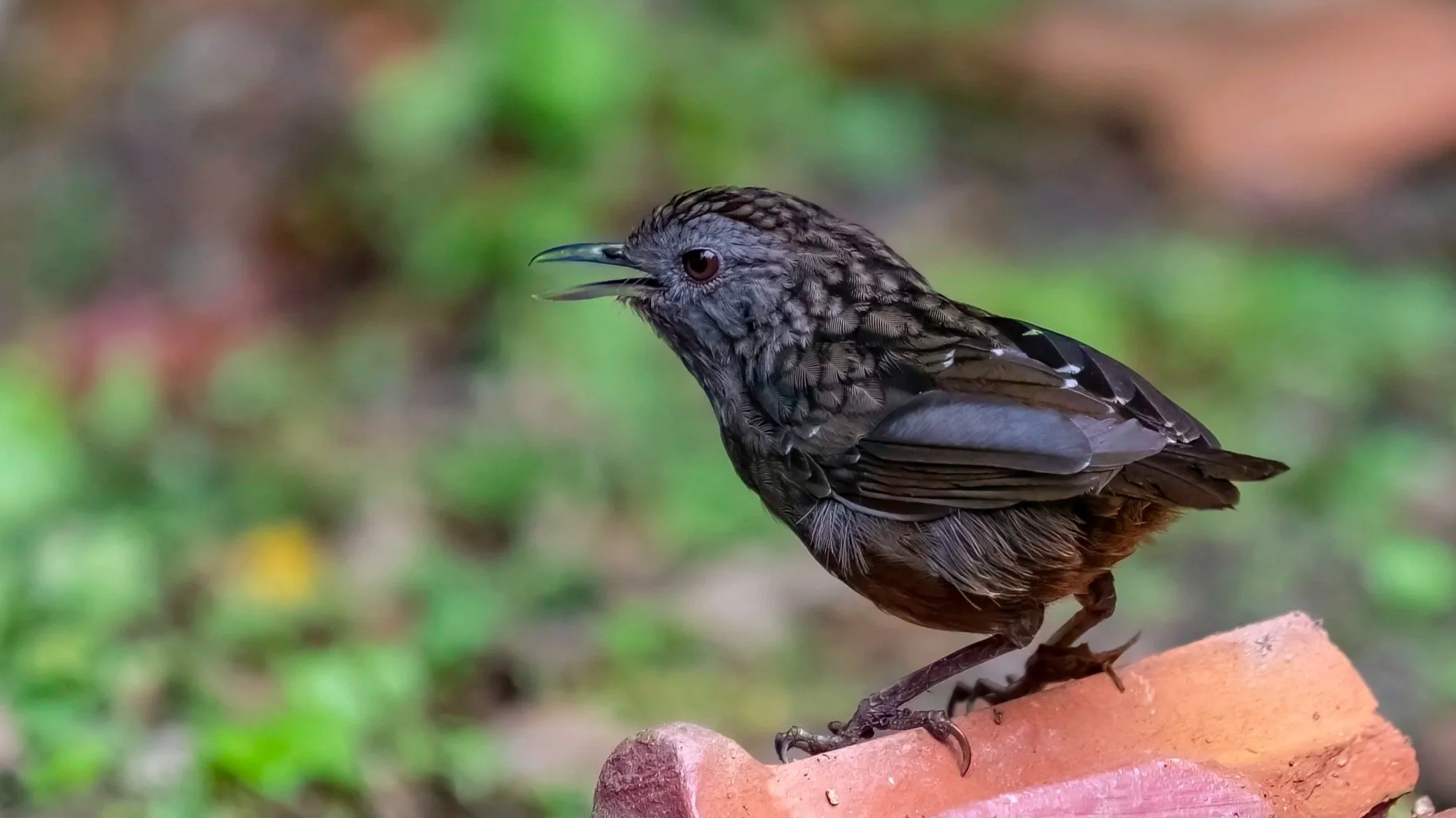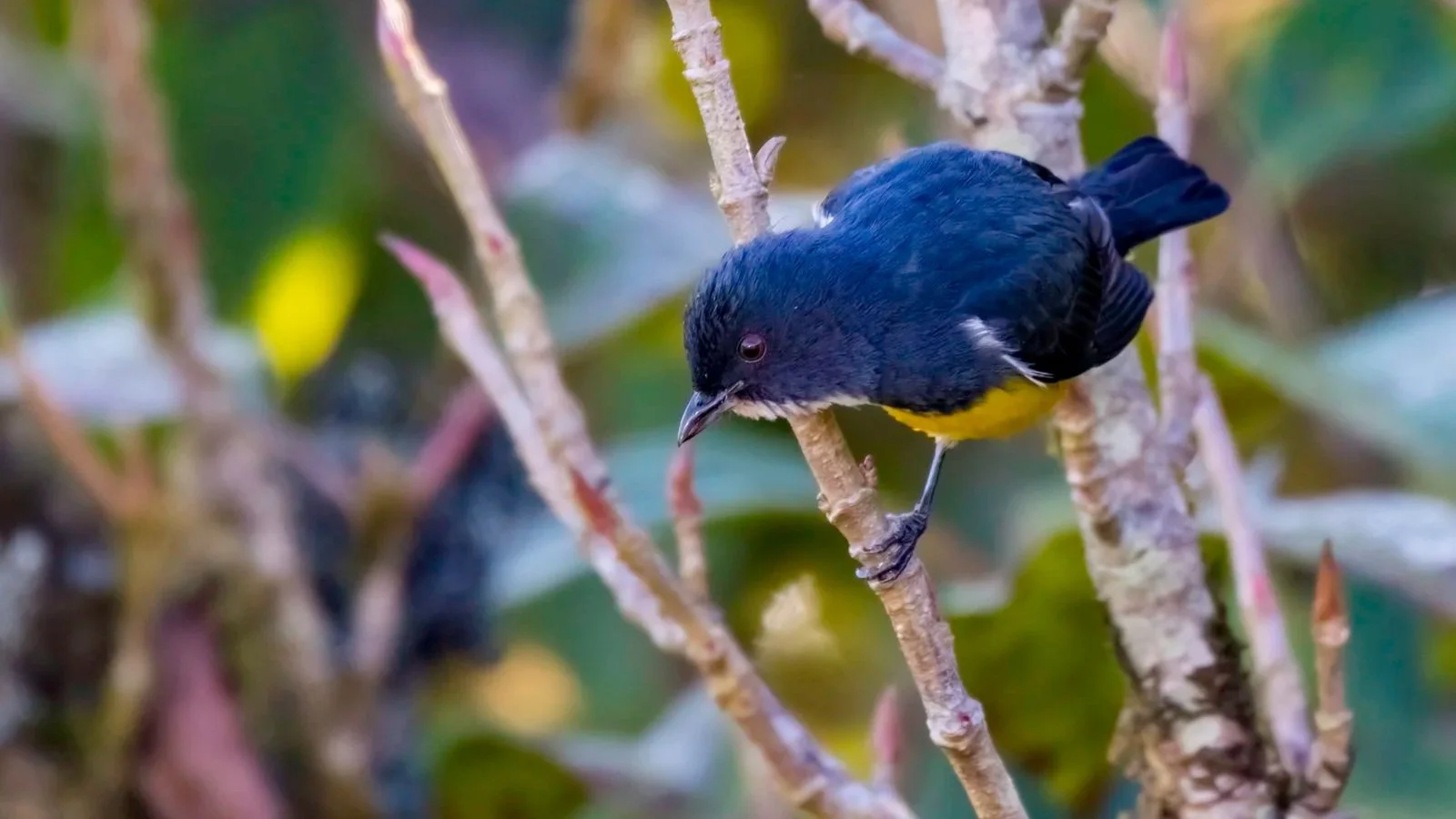Purple Heron
In Telangana, finding the Purple Heron (Ardea purpurea) often requires patient observation in dense, freshwater wetlands like those near the Ameenpur Lake or the Manjeera Wildlife Sanctuary. Unlike the bolder Gray Heron, this species is a master of camouflage within reed beds.
#wildartworks #canon #Wildlife #birdphotography #natgeoindia #conservationphotography #indian_wildlifes #indianwildlifeofficial #wildlifeonearth #planet_untamed_magazine #bbcearth #natgeowild #birdsofthedeccan #manjeera #sungeibuloh #ranganathittubirdsanctuary #bhigwanbirdsanctuary #ammavaripetcheruvu #kudikuntalake #kantegaonlake #Boath #kistareddypetlake #purpleheron #heron #heronconservation
Small Niltava
Finding and photographing the Small Niltava (Niltava macgrigoriae) on Doi Ang Khang in Northern Thailand is a pursuit defined by patience and reward. This tiny, shy flycatcher, a true "jewel of the hills", requiring one to slow down, blend into the montane forest, and await that fleeting moment when its brilliant blue plumage catches a stray beam of sunlight. The experience is one of quiet anticipation, culminating in the thrill of capturing the essence of this elusive bird.
#wildartworks, #Canon, #PromediagearTR424L, #Bird, #Birdinginthewild, #BirdWatching, #Wildlife, #WildBirds, #naturephotography, #your_best_birds, #planetbirds, #earthcapture, #photo_pond, #earthpix, #naturyst, #conservationphotography, #wildlifeonearth, #bbcearth, #natgeowild, #natgeoindia, #animalsofinstagram, @globalcapture, #DoiAngkhang, #DoiPhaHomPokNationalPark, #DoiPhaHomPok, #Thailand, #smallniltava, #niltava,
Streaked Wren-Babbler
The Streaked Wren-Babbler (Gypsophila brevicaudata) is a small, shy, and elusive brown bird commonly found in the dense forests of South and Southeast Asia. It is particularly known for its furtive, mouse-like movements as it skulks through thick undergrowth, making it a challenge to spot in its natural habitat.
#wildartworks, #Canon, #PromediagearTR424L, #Bird, #Birdinginthewild, #BirdWatching, #Wildlife, #WildBirds, #naturephotography, #your_best_birds, #planetbirds, #earthcapture, #photo_pond, #earthpix, #naturyst, #conservationphotography, #wildlifeonearth, #bbcearth, #natgeowild, #natgeoindia, @awpc.hk, #animalsofinstagram, @globalcapture, #BukitFraser, #FrasersHill, #Malaysia, #RichmondBungalow, #streakedwrenbabbler, #wrenbabbler,
Yellow-bellied Flowerpecker
It is a snappy-looking bird whose male is black with a white throat and yellow belly. Two black patches on either side of the chest give him a “vested” appearance. The female is soft brown above with a darker tail and wingtips, and a pale-yellow belly which blends gradually into the breast. They are found from the lower foothills up into montane areas, where it inhabits open areas with tall growth, particularly edges and clearings.
#wildartworks, #Canon, #PromediagearTR424L, #Bird, #Birdinginthewild, #BirdWatching, #Wildlife, #WildBirds, #naturephotography, #your_best_birds, #planetbirds, #earthcapture, #photo_pond, #earthpix, #naturyst, #conservationphotography, #wildlifeonearth, #bbcearth, #natgeowild, #natgeoindia, @globalcapture, #yellowbelliedflowerpecker, #flowerpecker, #DoiInthanon, #ChiangMai, #thailand,
White-bellied Redstart
The White-bellied Redstart from the family Muscicapidae is found in Bhutan, China, India, Laos, Myanmar, Nepal, Pakistan, Thailand & Vietnam, where its natural habitat is temperate forests. It is a dark, medium-sized songbird with a long orange-sided tail, totally unlike any other redstart. It breeds in shrubby montane areas, particularly in the transition zone between forest and more open habitats and winters in similarly dense habitat at lower elevations.
Subscribe if you would like to continue reading the stories.
#wildartworks, #Canon, #PromediagearTR424L, #Bird, #Birdinginthewild, #BirdWatching, #Wildlife, #WildBirds, #naturephotography, #your_best_birds, #planetbirds, #earthcapture, #photo_pond, #earthpix, #naturyst, #conservationphotography, #wildlifeonearth, #bbcearth, #natgeowild, #natgeoindia, #animalsofinstagram, @globalcapture, #DoiAngkhang, #chiangmai, #DoiPhaHomPokNationalPark, #DoiPhaHomPok, #Thailand, #whitebelliedredstart, #redstart, #oldworldflycatcher, #doi,
A Night under the Stars - Kantegaon Lake
Kantegaon Lake, in Boath Buzurg, offers a serene escape from city light pollution, providing a magnificent, unobstructed view of the cosmos. One can expect to see a sky full of shining stars and during its season, on clear nights, potentially the Milky Way.
Camping at the lakeside is a popular activity, allowing for a peaceful overnight stay in well-maintained, clean tents with cozy amenities. The experience is often complemented by a warm campfire and a barbecue dinner, where friends and family can share stories and laughter in a tranquil, natural environment. The quiet atmosphere of the lake, away from urban noise, ensures a truly relaxing retreat, with the soothing sounds of water and nature enhancing the experience. These organized camps even offer guided stargazing sessions with powerful telescopes and expert naturalists.
#wildartworks, #Canon, #PromediagearTR424L, #MilkyWay, #MilkyWayPhotography, #Longexposure, #ETTR, #LightPollution, #MilkyWayTimelapse, #LongExposureTimelapse, #Timelapse, #Astrophotography, #TelanganaDarkSkies, #TelanganaAstrophotography, #WildSoundWorks, #Bortle3, #Bortle3MilkyWay, #fallingmeteor, #boath, #BNCS, #BoathNatureConservationSociety, #TSFD, #TelanganaStateForestDepartment, #PranayThodishetty, #SiddharthaMukherjee, #Telangana,
Siberian Stonechat
Every winter, as the vast landscapes of Siberia and temperate Asia surrender to ice and snow, a remarkable natural phenomenon unfolds: a mass migration of millions of birds seeking survival in warmer climes. Among the most resilient of these avian voyagers is the Siberian Stonechat (Saxicola maurus), a tiny bird that flies thousands of kilometers to the Indian subcontinent. In Telangana, this little flycatcher becomes a familiar, welcome sight during the cooler months, transforming open scrublands and wetland margins into temporary winter homes.
The Siberian Stonechat is a chunky little bird of open landscapes; often seen on exposed perches. The breeding male has a black head, broad white half-collar, and rusty-red chest while the non-breeding male is patchier, with a paler head and chest.
#wildartworks #Canon #SiberianStonechat #Stonechat #BirdWatching #WildlifeVideo #NatureDocumentary #BirdPhotography #Ornithology #AsianBirds #MigratoryBirds #WildLife #NatureLovers #Migrant
Common Sandpiper
The Common Sandpiper (Actitis hypoleucos) is a small, migratory wader known for its constant head-and-tail bobbing motion. It breeds across Europe and Asia, wintering in warmer climes like Mokila, Telangana, and Sungei Buloh, Singapore.
Adaptable to both freshwater and coastal habitats, it forages for insects and invertebrates in shallow water and mud. A largely solitary bird during migration, the Common Sandpiper is a widespread species whose conservation depends on preserving the global network of wetlands it utilizes during its remarkable annual journey.
#wildartworks #canon #wildlife #wildlifephotography #birdphotography #CommonSandpiper #ActitisHypoleucos #Shorebirds #MigratoryBirds #WetlandConservation #Mokila #Telangana #IndiaWildlife #SungeiBuloh #SingaporeWildlife #Birdwatching #Ornithology #WildlifePhotography #TeeteringWader #BirdMigration #AvianWorld #NatureLovers #WetlandsInternational #GlobalMigration









